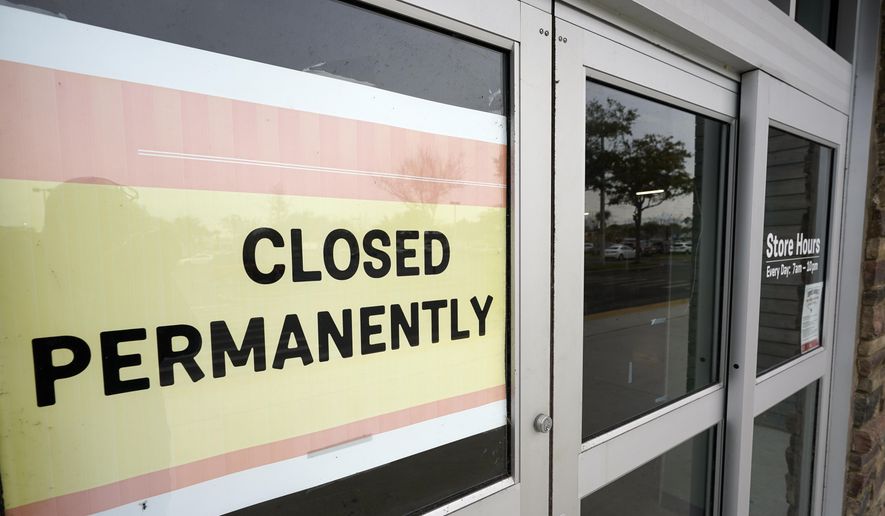OPINION:
One of the more underreported stories of the past year is how residents of New York and California are leaving their progressive states behind for the likes of Texas and Florida. It’s a major realignment, accelerated by the coronavirus, that will have a profound impact on our country.
High taxes, restrictive lockdown policies and expensive housing have all contributed to the great Sun Belt migration.
New York and California have continually raised state taxes to pay for their public unions’ lavish collective-bargained benefits. New York has the highest tax burden in the country. Californians pay among the highest taxes in the entire nation.
Both Florida and Texas have no state income tax, giving them a built-in competitive edge. They also have right-to-work laws, which makes unions optional and is more attractive to businesses.
Then there’s the impact of the coronavirus, which forced many California and New York residents to work remotely from their homes. Part of the attraction of living in cities such as New York and Los Angeles is the ability to go out to restaurants, museums, shows and clubs. Most of these amenities still remain closed in those states.
Meanwhile, Texas and Florida have reopened. Masks are optional. Housing is bigger and cheaper. Taxes are lower. Why pay a premium to live in a city you can’t enjoy when you have the option to live freely while maintaining the same job, working remotely?
Last year, Tesla, Oracle and Hewlett Packard — the latter which defined the birth of Silicon Valley — exited the Golden State for greener pastures in Texas.
California’s population shrank for the first time ever in 2020, according to U.S. Census Bureau. A net 261,000 California residents moved to other states during the period, the most in nearly 25 years, with the vast majority of these out-migrants relocating to Texas or Arizona.
Likewise, people moving out of New York City last year gave the Empire State the biggest population decline of any state in the nation and put it on track for its first population fall of any decade since the 1970s. Unacast, a location analytics company estimates the out-migration will cost New York about $34 billion in lost income.
Doubling down on bad politics, New York Gov. Andrew Cuomo has proposed more tax increases and cuts to services like garbage collection, transportation and park maintenance to make up for the loss.
Meanwhile, the Empire State remains locked down and is testing coronavirus vaccination passports as a path for reopening.
California Gov. Gavin Newsom — who’s facing a recall — has largely shrugged off the mass exodus from his state.
“I’ve lived here half a century and heard this pretty much every decade,” Gov. Newsom said last year when asked why so many California residents and businesses were leaving. “California remains one of the happiest places to live.”
Perhaps for the wealthiest in the world. California data show the middle class is being priced out of the state.
“High housing costs have made California an increasingly difficult place for lower-income residents with less education to maintain their quality of life, while many middle-income residents are having trouble moving from renting to homeownership,” nonprofit Next 10 wrote in an analysis of California’s migration patterns. “Meanwhile, those with higher education and high-wage occupations continue to find the state an attractive place to live.”
For how long remains a valid question, as progressive lawmakers and the state’s teachers union have proposed a wealth tax on California’s 169 billionaires. This is on top of the Golden State having the highest state sales tax rate in America and the highest gas tax in America.
Oh, and its schools and businesses — like New York’s — still remain largely locked down.
Billionaire Elon Musk moved to the Lone Star State from California last year and Dropbox CEO Drew Houston followed his lead.
According to the Austin Chamber of Commerce, 39 companies in tech and other industries found new homes in the city in the past year alone.
Most Sun Belt states which have a combination of low taxes and favorable business climates gained in population last year, led by Texas (373,965), Florida (241,256), Arizona (129,558), North Carolina (99,439) and Georgia (81,997), according to Census data.
Given this massive realignment, many conservatives living in these Sun Belt states worry their newfound neighbors from the Northeast and West will carry their progressive politics with them, and turn their red states blue.
It’s a valid concern — just look at the demographic and voting shifts in the 2020 presidential election in Georgia and Arizona, which both certified Democrat Joe Biden as their winner.
It remains to be seen whether solidly red Florida and Texas will remain conservative or whether these liberal transplants recognize what they’re fleeing from and embrace the open market, individual liberty and low tax policies that spurred them to relocate in the first place.
One thing is for certain: It will be fascinating to watch how it all plays out.




Please read our comment policy before commenting.